- Home
- Raccoon Trapping
- Raccoon Bucket Set
Raccoon Bucket Set
This post may contain affiliate links so I earn a commission.
If you're interested in trapping raccoons, the raccoon bucket set is a great addition to any trapline.
They're quick and easy to make, plus the plastic bucket is relatively inexpensive or even free if you do a little leg work.
Placing a conibear trap inside of a bucket to trap a raccoon is nothing new.
In fact, trappers have been doing it for years.
However, there's more to the bucket set than just throwing a bucket on the ground and setting a trap in front of it.
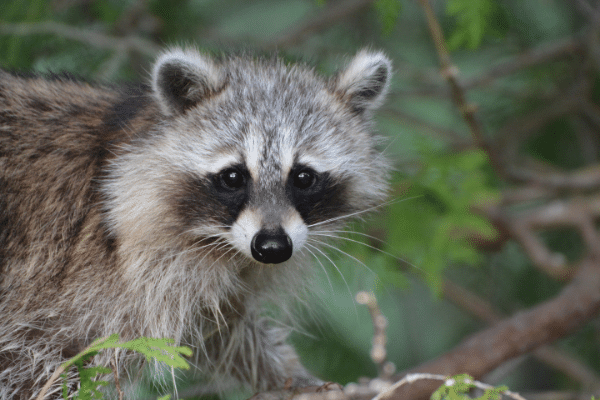
With a little knowledge and a few simple tricks you'll be able to create the set in a matter of minutes.
Plus, we'll tell you a few things to avoid so your sets are more productive.
Why does the bucket set work so well?
Raccoons are curious animals.
They love to search for food under rocks, logs and inside holes which means they're not scared to stick their head into a bucket to grab an easy meal.
Trap And Bucket Selection - Raccoon Bucket Set
You basically have two options when choosing a trap, the 160 conibear or the 220 conibear.
Either one will work and it's basically a matter of preference.
When comparing the two traps, the 160 does have a few advantages.
First, the 160 trap is cheaper than a 220.
Although the difference is not huge, it does add up if you're buying a dozen or more traps.
Second, the 160 traps are lighter and easier to handle compared to the 220.
When you're lugging a bucket full of traps through the woods, a few extra pounds can make a big difference.
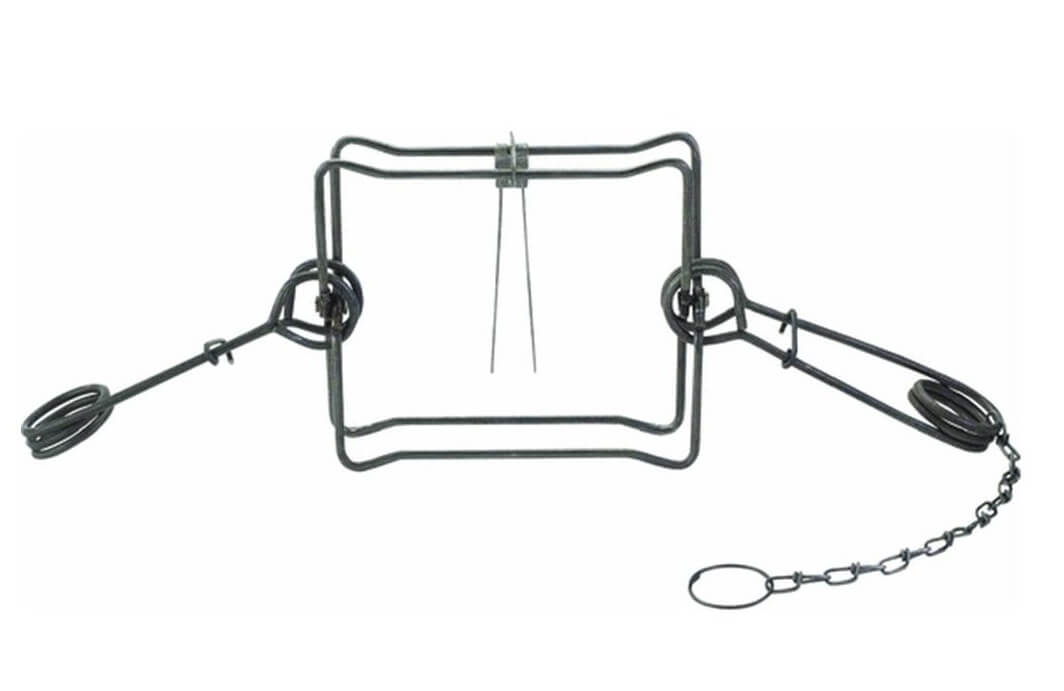
There's nothing wrong with using a 220.
It's a great trap and will work just fine for raccoons, especially if you already have a few laying around.
However, if you don't have any body grip traps and are looking at purchasing a few, consider the 160.
When choosing a bucket, I recommend using a square bucket compared to the standard round 5 gallon bucket.
The square version is easier to handle because they're smaller and less bulky.
Plus, since they have flat edges they don't roll back and forth, which is something that's very important when constructing the set.
Although they're not as common as the round version, square buckets are pretty easy to find if you look around.
Cat litter containers, food items and many other things are shipped in square plastic buckets.
If you find the right business you can usually get them for free.
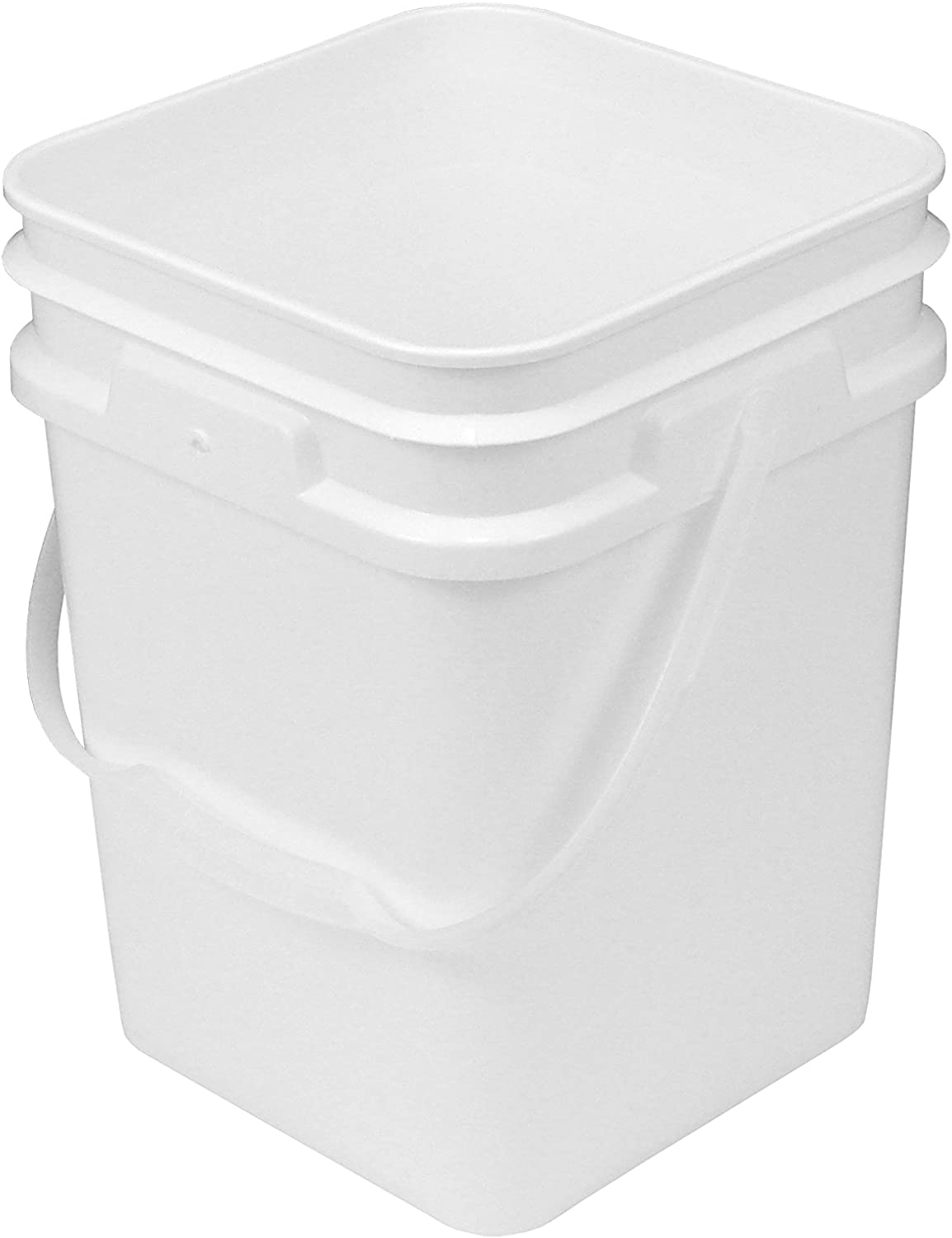
Or, simply search for them online and you'll have plenty of options.
You can also build your own box out of wood, but any homemade box I've used has been heavy and bulky compared to a plastic bucket that can stack inside each other.
Bucket Modification And Set Construction
Once you have your bucket you'll need to cut a small notch on each side of the bucket to hold the trap.
I like to center the trap in the opening of the bucket, and the holes where the handle attaches to the bucket creates a great reference point.
To begin, remove the handle from the bucket.
Next, cut a 2'' long slot about 1/4'' wide in each side of the bucket.
The 1/4'' wide slot allows the trap to fit snug inside the bucket, reducing the amount of side to side movement.
If you're using the raccoon bucket set to trap public land, I recommend spray painting the buckets to prevent theft.
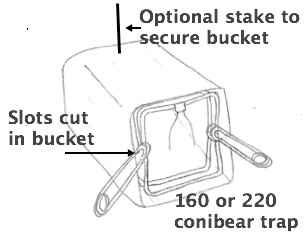
Paint them a color that blends in with the surroundings.
If you're trapping private land and theft is not an issue, just leave the buckets white.
The white color will not scare a raccoon, and the noticeable color can even serve as an attractant to a curious raccoon.
Finally, you can drill a small hole on the top and bottom of the bucket near the back just large enough to place a stake through the holes to secure the bucket to the ground.
Another option is to just stick a rock or branches on top of the bucket to secure it when you make your set.
To make the set, choose a location that has good raccoon sign.
Tracks, trails and scat are all good indicators you're in a good area.
Although you don't have to set the trap directly on a well beaten raccoon trail, it's important to be close to an area where the raccoons frequently visit or travel.
Secure the bucket with a stake or by using nearby rocks and sticks.
It's important the bucket rests firmly on the ground and does not rock back and forth....this step is very important.
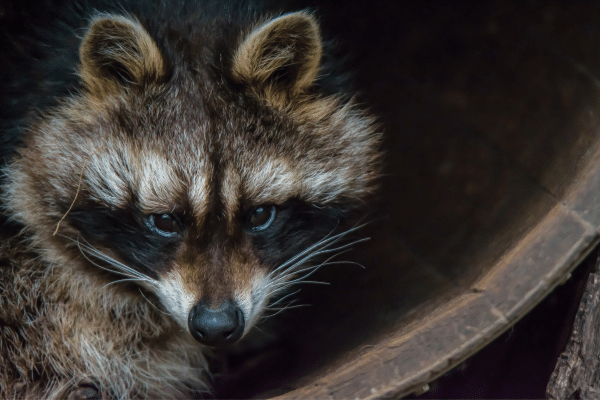
Once you secure the bucket, place your bait in the back of the bucket.
Fish (mackerel or sardines), peanut butter, vanilla waffers, raspberry jam or dog food soaked with fish oil all work great.
Once the bucket is baited, set the trap in the opening and use sticks to support the trap if it's not solid.
Wire the trap to something study like a small tree or stake and you're done with the raccoon bucket set!
Things To Consider - Raccoon Bucket Set
Conibear traps are very humane when used properly but since they're kill traps you should consider the possibly of catching a non target animal.
A good practice is to avoid this style of trap on public land where dogs or cats are likely to be present.
No matter how careful you are accidents can occur, so it's better to just avoid areas that may result in catching someone's pet.
Overall - Raccoon Bucket Set
The raccoon bucket set is a great set to use and it works really well.
With just a few simple supplies and a few minutes of your time, you can create a great set that you can use year after year.



